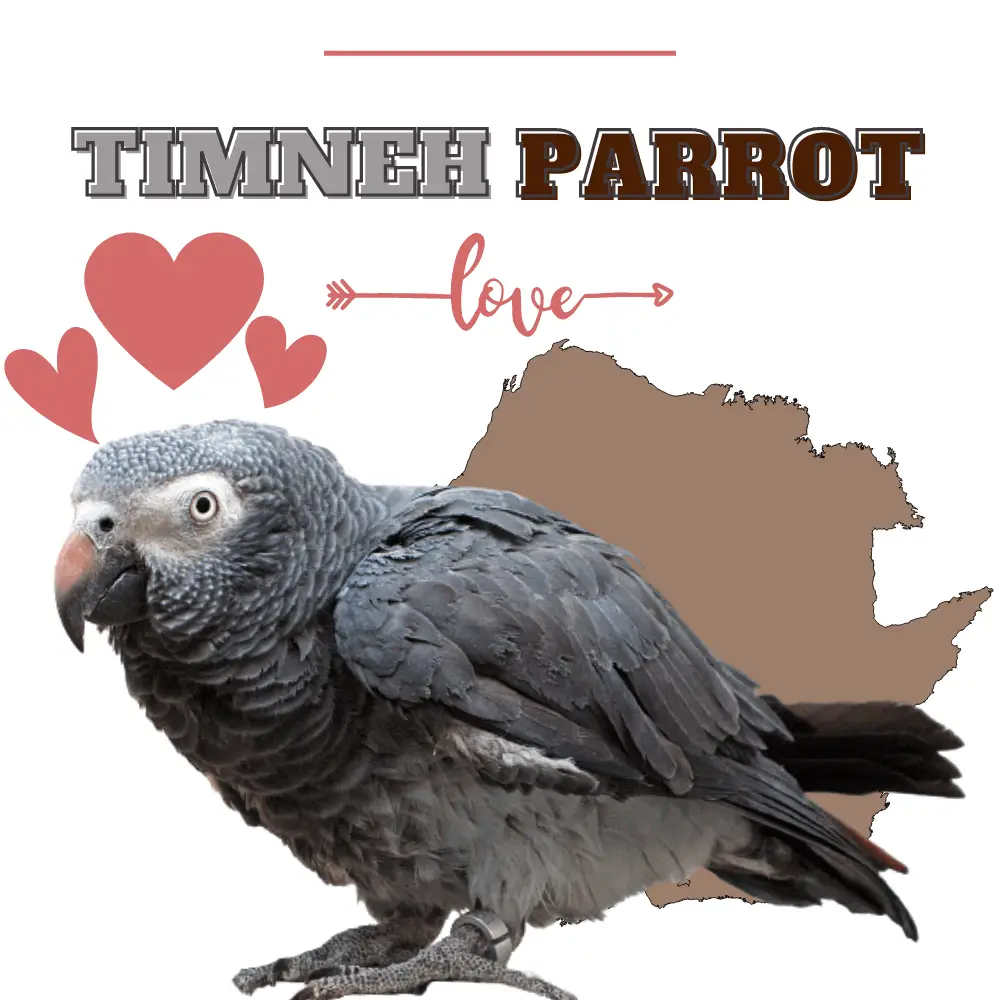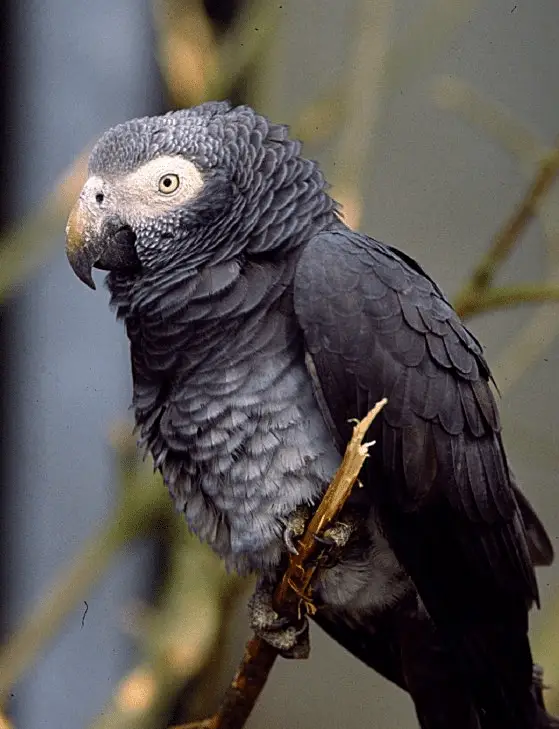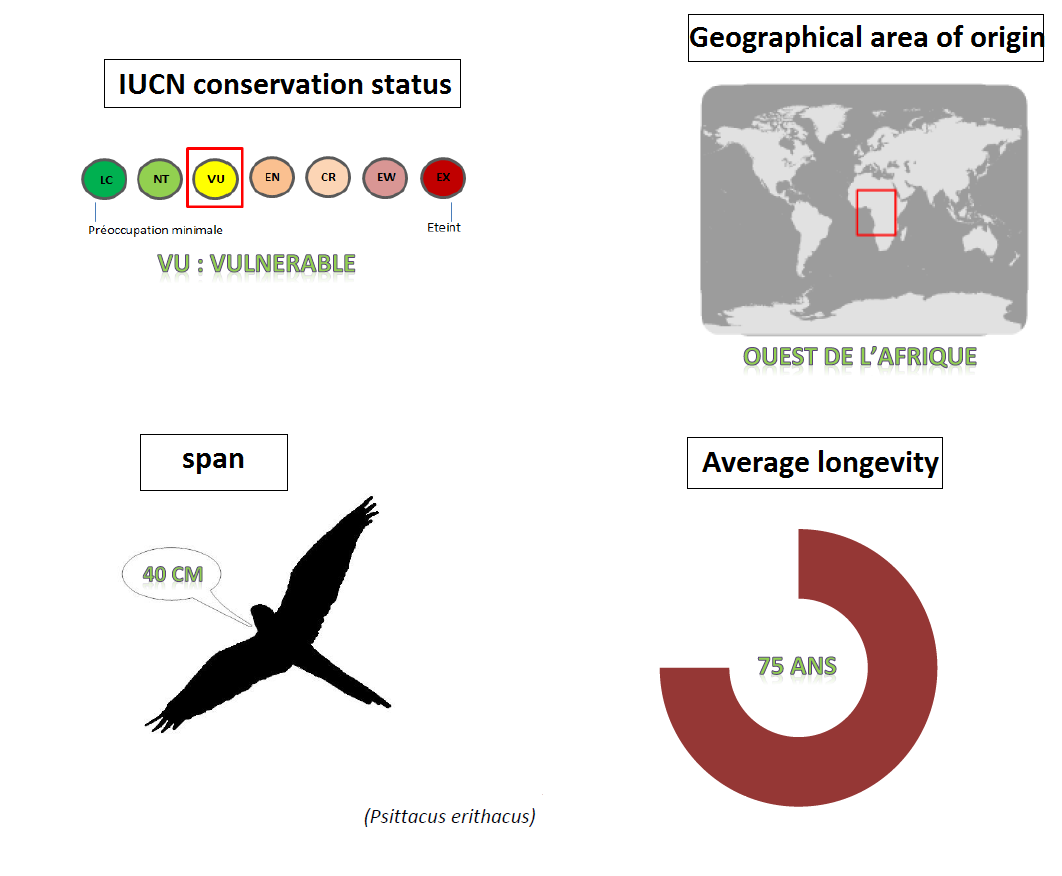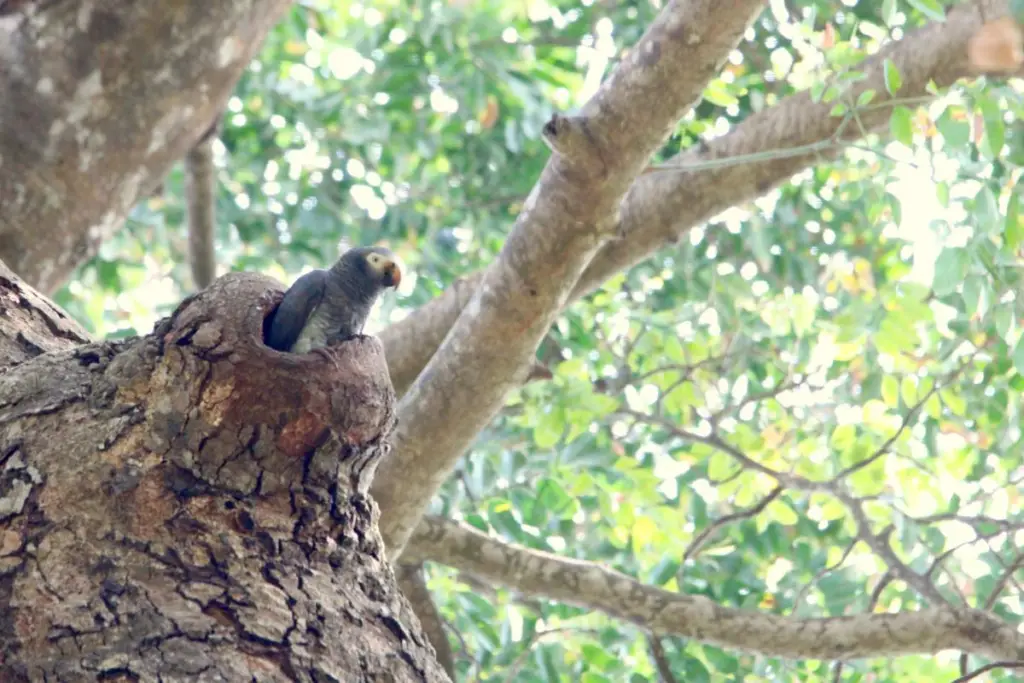
Everything you need to know about Timneh parrot (Psittacus Erithacus)
Famille: Psittacidae
CITES Appendix II, freeholding not subject to quotas
Sex: No sexual dimorphism
phenotype :
- African gray parrot (more or less dark), white mask, white mask, very affectionate feathers towards their owner or between them. It requires great attention to avoid boredom and the problems that result.
Character: Very intelligent birds able to talk and who can be very affectionate towards their owner or between them requires a lot of attention in order to avoid the boredom and the problems which result from it
Weight: 450 g
Origin: South Guinea, Sierra Leone, Liberia, Mali, and Ivory Coast Character: Intelligent, Clever Longevity: 50 years Height: 28 un. 32 cm. length and weight between 275 and 375 grams.
The Timneh Parrot (Psittacus timneh) Dark is that the gray and red parrot has the tail feathers wider, darker and usually brown (no Scarlet).
The supracaudal coverts gray threads, dyed red (no Scarlet).
The woodpecker is mainly black, but it has an ivory or pink color in the upper third of the upper jaw.
There is no visible difference between a male parrot and a female parrot.
The youth have black eyes which become yellowish cream at the age of two years.
Smaller than the Gray Parrot
Sound of the Timneh Parrot.

Psittacus Princeps timneh
- (Alexander, 1909) – Darker and slightly larger than the subspecies Psittacus timneh timneh, although its size is still below the Gray Parrot (Psittacus erithacus).
- The tail feathers are red like those of the gray parrot but marked by greater contrast with the almost body-colored black feathers, giving this subspecies a different impression. The eyes are yellow, the woodpecker is black and the legs are dark gray.
Psittacus timneh timneh
(Fraser, 1844) – Nominal.
Habitat

Although normally populate dense forests, they are also generally seen at the edge of forests, clearing, gallery forest, mangroves, tree leaves, cultivated areas, and even gardens, although it is not clear whether c are self-sufficient populations.
You can make seasonal trips outside the drier areas of its distribution in the area of the dry station.
Sometimes travel long distances for food. timneh parrot nest in hollow trees high above the ground. Found in small strips of a few dozen, usually no more. Flocks of birds can be noisy.
Reproduction
Little known difference in regard to the Gray Parrot.
The breeding season is generally from November to April in the more westerly regions of West Africa, probably, especially during the dry season.
During the breeding season, they put 2 a. 4 heaven.s, every two or three days. These Hatch in 28-30 days and the young are independent at 12 a. 14 weeks.
Food
In the wild, the Timneh Parrot eats seeds, nuts, fruits, and vegetables. instead of flying, they climb trees, to find food and keep it with one leg while eating. They like to eat external walnut meat from palm oil, and eating snails have been observed.
In West Africa, his hobby is known for pearls, attacking cornfields, and coming to be considered harmful in certain places.
Size of the distribution area (reproduction / resident): 541,000 km2

They are distributed in the west, in the wetlands of Upper Guinea, and along the savannas of West Africa From Guinea-Bissau, Sierra Leone, and south of Mali to the east of Côte d’Ivoire, at least 70 kilometers east of the Bandama River.
The wild population is distributed with the nominal species in Abidjan, Côte d’Ivoire.
Distribution 2 subspecies:
Psittacus Princeps timneh
(Alexander, 1909) – Prince Edward (Gulf of Guinea).
Psittacus timneh
(Fraser, 1844) – Nominal. Southern Guinea, Sierra Leone, and Liberia, as well as the western part of Côte d’Ivoire. There are also small groups Guinea Bissau and Mali. populations Senegal They disappeared the fish trade.
Storage:
• IUCN red list: Vulnerable
• Population trend: Descending
Its population is estimated between 100,000 and 500,000 exemplary and decreasing.
P. Erithacus, before the timneh division, was placed in Appendix II of CITES with all the Psittaciformes in 1981 at the request of Switzerland and Liechtenstein.
Due to concerns about the effects of a large number of these species traded, it was the subject of a review of significant trade in CITES, which was listed as “possible problems” (Inskipp et al. 1988).
The City Animals Committee imposed a two-year sanction as of January 2007 on exports of timneh from four West African countries (Côte d’Ivoire, Liberia, Sierra Leone, and Guinea)
In 2009 Guinea exported 720 timneh, Despite a share of 0 (Anonymous 2011).
Legal trade controlled by CITES It can represent only a small proportion of the total number caught in the wild.
The species is found in a number of protected areas.
Timneh African grey lifespan
Timneh African Greys like congo african grey parrot the have an average lifespan of 40 to 50 years
SOURCE:Uncharted Wild




















